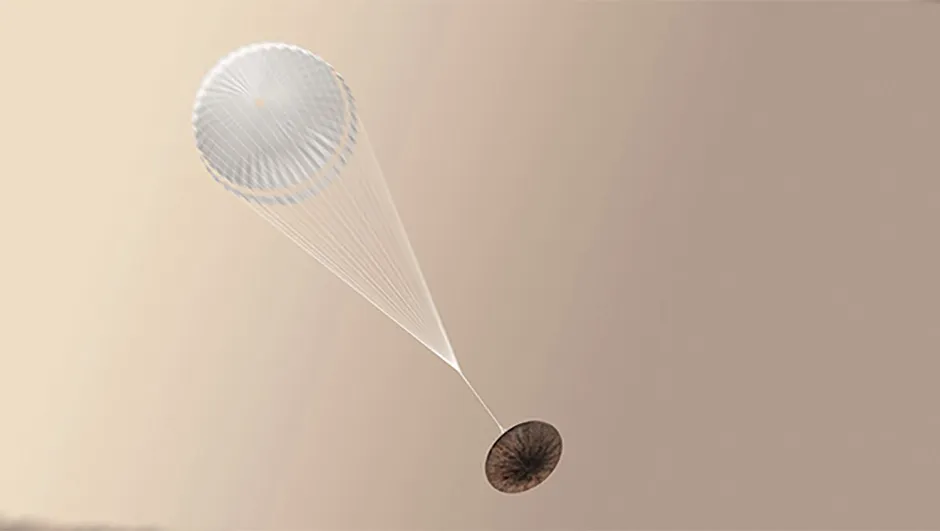The Schiaparelli landing module that was part of ESA’s ExoMars 2016 mission crashed on the surface of the Red Planet because of software errors.
The findings are part of an ESA inquiry into the crashing of the Schiaparelli module onto Mars at the end of last year.
The ExoMars project is part of the search for evidence of life on the Red Planet.
While today’s Mars is a hostile, barren environment, scientists believe that the planet was once a warmer, wetter, more habitable world; most likely during the first billion years following planetary formation.
The spacecraft carrying the Schiaparelli lander and the Trace Gas Orbiter (TGO) launched on 14 March 2016 and the two components separated on 16 October; the lander travelling towards its landing site and the orbiter making its way to orbit in the planet's atmosphere.
The TGO successfully inserted into the Martian atmosphere on 19 October 2016, but the Schiaparelli lander lost contact with Earth just as it was due to have landed.

Data at the time suggested its parachute opened as planned but was released too early, while its thrusters did not do enough to slow its rate of descent, causing the lander to crash.
The investigation into the events surrounding the crash has now concluded that “conflicting information” caused the descent sequence to end prematurely.
About three minutes after Schiaparelli’s entry into the Martian atmosphere the parachute deployed, but the module was experiencing higher rotation rates than expected.
This caused a “saturation” of the module’s Inertial Measurement Unit, which measures the lander’s rotation rate.
As a result, the navigation software on the lander thought that the lander was actually below ground level on Mars, when in fact it was still descending.
This caused early release of the parachute and its heat shell, a brief firing of thrusters for three seconds instead of thirty seconds, and the activation of its on-ground system.
Schiaparelli thought it had already landed, but it was free falling from a height of about 3.7km, eventually crashing onto the surface of the planet at 540 km/h.
However, ESA believes that lessons learned following the Schiaparelli crash will provide valuable information for the upcoming ExoMars 2020 mission, which will see a European and a Russian rover delivered to Mars to search for signs of life on and below the surface.
“There were clearly a number of areas that should have been given more attention in the preparation, validation and verification of the entry, descent and landing system,” says David Parker, ESA’s Director of Human Spaceflight and Robotic Exploration.
“We will take the lessons learned with us as we continue to prepare for the ExoMars 2020 rover and surface platform mission. Landing on Mars is an unforgiving challenge but one that we must meet to achieve our ultimate goals.”
“Interestingly, had the saturation not occurred and the final stages of landing had been successful, we probably would not have identified the other weak spots that contributed to the mishap,” notes Jan Woerner, ESA's Director General.
“As a direct result of this inquiry we have discovered the areas that require particular attention that will benefit the 2020 mission.”
